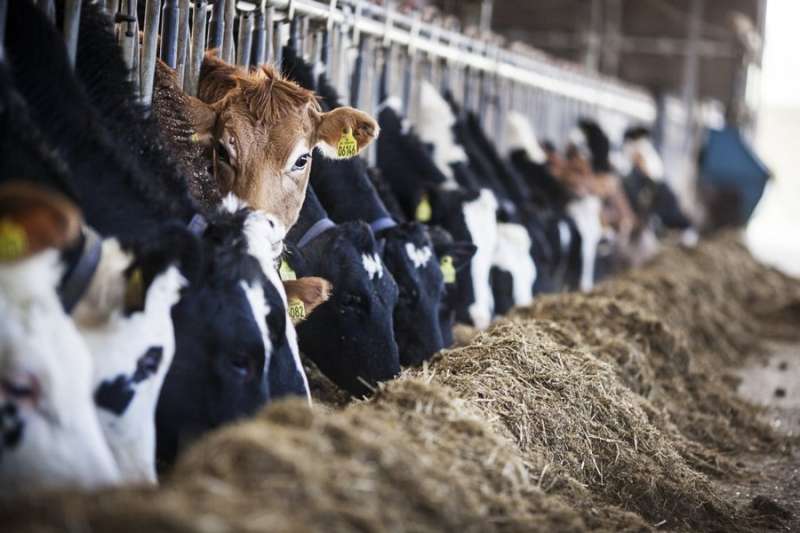Concentrating milk at the farm does not harm milk quality

At dairies, the reverse osmosis filtration technique is extensively used to remove water from milk to be used for further processing such as e.g. cheese or milk powder. However, many resources would be saved if it was possible to move this process to the farms, since you would reduce the amount of water transported.
In cooperation with the Danish dairy company, Arla, PhD student Ida Sørensen and Associate Professor Lars Wiking from Department of Food Science at Aarhus University have examined how milk quality is affected when concentrating the milk is carried out on-farm.
Ida Sørensen explains:
"Even though the reverse osmosis technique is widely used, we only have limited documentation of how it affects milk quality. Milk is a rather delicate raw material so it is important to identify how key quality parameters such as protein breakdown and level of free fatty acids (FFA) and total bacterial count are affected. These parameters are important to the taste, smell and look of the final product."
She continues:
"It is important that on-farm concentration does not deteriorate the quality. Normally, it is not a problem that the fat globules in the milk are damaged in the process at the dairy, as the milk is subsequently pasteurized. However, when carrying out milk concentration at the farm, the milk is left unpasteurized and all the enzymes and micro-organisms are still there and therefore the milk is more delicate, Ida Sørensen explains."
No quality deterioration
The researchers at Aarhus University have analyzed experiments with both the so-called ultrafiltration, which is supposed be more gentle to the milk, and with the reverse osmosis technique, which requires a higher pressure on the milk but also retains the lactose which may be an advantage in for example milk powder. Neither the total bacterial count, or the FFA-levels nor the protein breakdown were negatively affected by reverse osmosis; the concentrated milk could very well be used for both cheese and milk powder.
Analyses also demonstrate that the quality and durability of milk powder made from concentrated milk is the same as for powder made from ordinary milk; in cheese, however, there is a minor difference as to how the enzymes react; and in the experiments, concentrated milk coagulated approximately ten minutes later than regular milk.
"My theory is that it is more difficult for the enzymes to 'get through', Ida Sørensen says and explains that concentrated milk is thicker—more like coffee cream—and this might explain why coagulation takes a little longer."
Significant interest—but is it worthwhile?
Concentration of milk on the farm, or during transport from farm to dairy, is carried out in many other countries in the world, e.g. in Texas, USA, where both herds and distances are huge. Different models exist as to how on-farm milk concentration may become a reality. The farmer may buy the filtration equipment himself and achieve an additional price for the milk. Or perhaps the dairy could buy, maintain and service the filtration installation or it could be acquired through some kind of leasing agreement.
Herd size and distance to the dairy in particular, are of major importance when considering resources and profitability, as small installations typically use more power than one large installation, says Ida Sørensen; she has just presented the results of the studies at a major conference in Dublin.
"While farmers have shown significant interest in the idea, the dairies seem more skeptical; especially in relation to finances as well as the handling of this new type of milk. Arla is currently making calculations in relation to the profitability of this project, as energy consumption and investments should be balanced in proportion to cost savings."
More information: Ida Sørensen et al, Storage stability of whole milk powder produced from raw milk reverse osmosis retentate, Dairy Science & Technology (2016). DOI: 10.1007/s13594-016-0309-y
Provided by Aarhus University

















